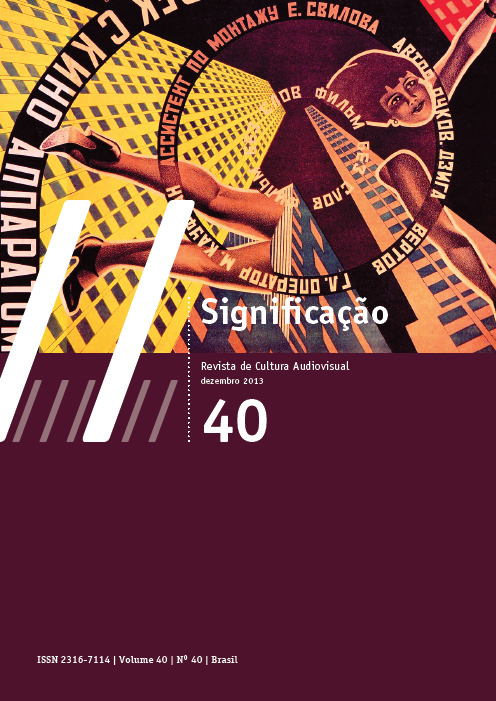Mise-en-abyme of the culture: the space behind the camera in Pi’õnhitsi and Mokoi Tekoá Petei Jeguatá
DOI:
https://doi.org/10.11606/issn.2316-7114.sig.2013.71683Keywords:
Pi’õnhitsi, Mokoi Tekoá Petei Jeguatá, indigenous cinema, “culture”, reversibility.Abstract
Through the analysis of two documentaries — Pi’õnhitsi e Mokoi Tekoá Petei Jeguatá —, the article suggests the constitutive nature of the “antecampo” (the space behind the camera) in the indigenous films. It is the space in which the director enacts a double and interchangeable role: within the scene, as a member of the community, and out of the scene, as a filmmaker. Then, we unfold the hypothesis that, through the exposition of the “antecampo”, the indigenous cinema expresses, by mise-en-abyme, the engendering between culture and “culture”.
Downloads
Downloads
Published
Issue
Section
License
Copyright (c) 2013 André Brasil

This work is licensed under a Creative Commons Attribution-NonCommercial 4.0 International License.
Authors who publish in this journal must agree with the following terms:
- Authors keep their copyrights and grant the journal first time publication rights, having their articles simultaneously licensed under the Creative Commons Attribution License, which allows sharing texts with authorship recognition and first publication on this journal for non-commercial purposes.
- Authors are allowed to make additional contracts, for a non-exclusive distribution of the article’s version published on this journal (e.g.: publishing in institutional repositories of articles or as a book chapter), with authorship recognition and first publication on this journal.
















